Many cultures around the world celebrate community festivals and the Sherpa one is no exception. These celebrations are especially important for communities that live in remote places, as there are occasions for families and friends to meet each other.
Most of the people’s jobs in these valleys are hard, often dangerous, jobs that leave them little time to meet each other and socialise That’s why festivals and annual celebrations, in monasteries and villages, are the occasions they have for spiritual life, fun, social life and rest.
Many Sherpa festivals are religious, such as Mani Rindup, Dumchi, Nyungne, or Chirim Lhabsang, but all have also lay components. Others are lay such as Losar, Yarchang or Phagnyi.
Almost all these festivals have organizers-sponsors, who change every year and take care of the organization and take charge of the expenses.
Since there are many festivals that celebrate during the year, I thought it would be good to describe what I’ve seen so far. And next year, at the end of my stay here, I will talk about the others.
NYUNGNE
Twice a year, in many monasteries, the Nyungne is organized, which is a retreat for spiritual development, through the practice of renunciation of fasting, prayer and silence. It lasts for 3 days, during which the participants live in the monastery. It is organised by the monasteries and sponsored by the participants.
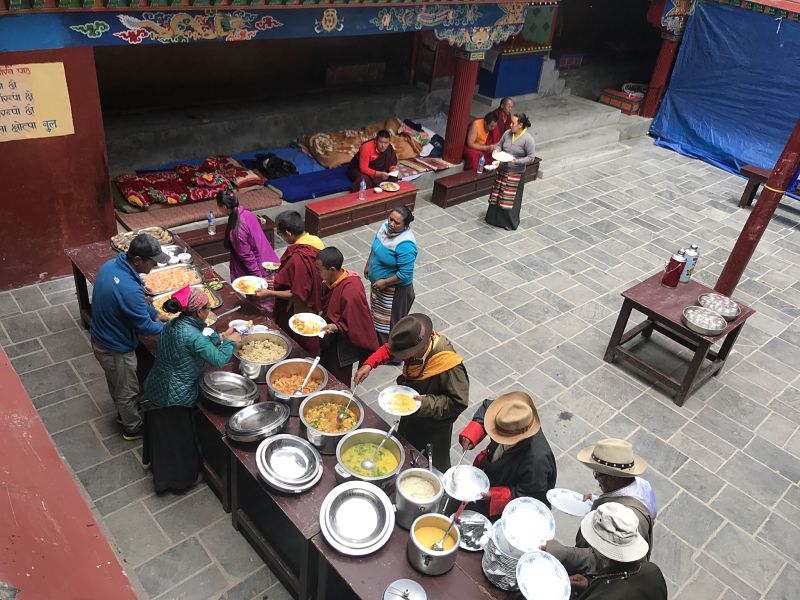
Self service lunch at Namche Monastery 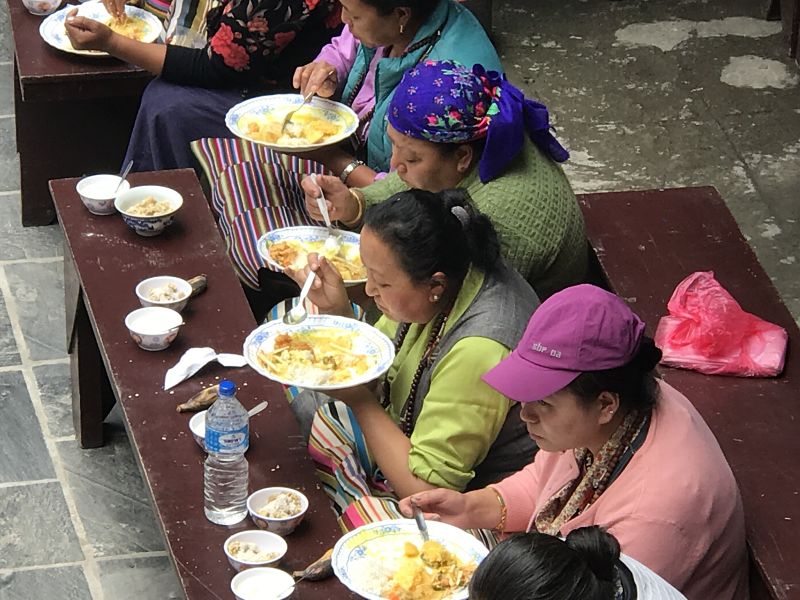
Lunch before a day fasting
The first day, Lhabsang, they pray, cook and eat normally. The second day, khungsang, participants fast and maintain silence. They pray and recite mantras in silence circumambulating monasteries. The last day, chowa, the fasting ends and eating and drinking begins.
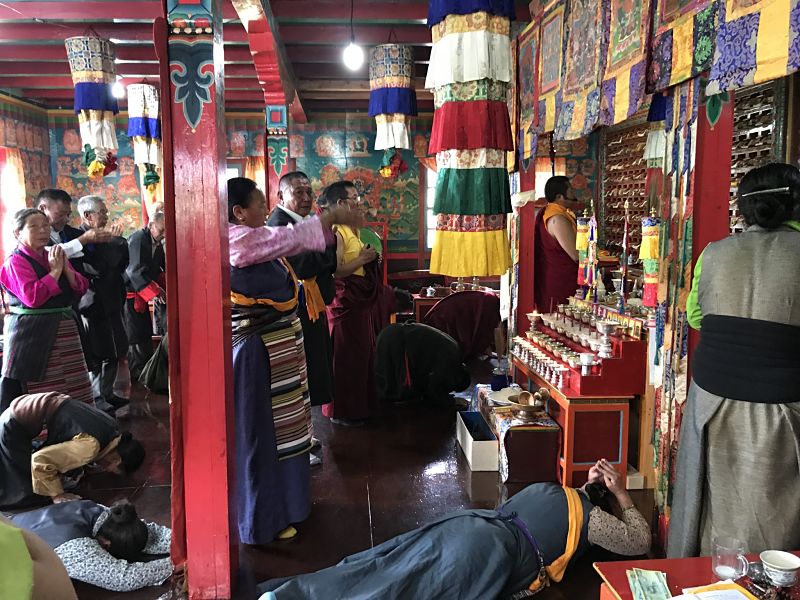
Prayer inside the Namche monastery 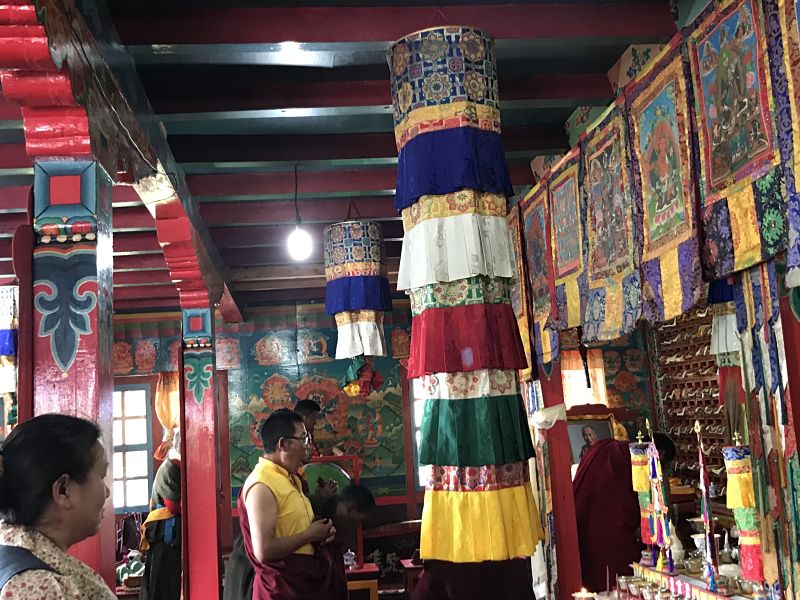
Silent pray
The first days of August, I could attend this retreat in the monastery of Namche. They organised two shifts of 3 days each, with about 25 people, all wearing traditional Sherpa dresses. During the two nights of retreat they sleep in the porches of the monastery courtyard.
PHAGNYI
At the beginning of August, most villages celebrate the Phagnyi party, which in Sherpa means the day of the pig. It is a totally lay party with a group that takes care of organizing it and the participants pay the costs.
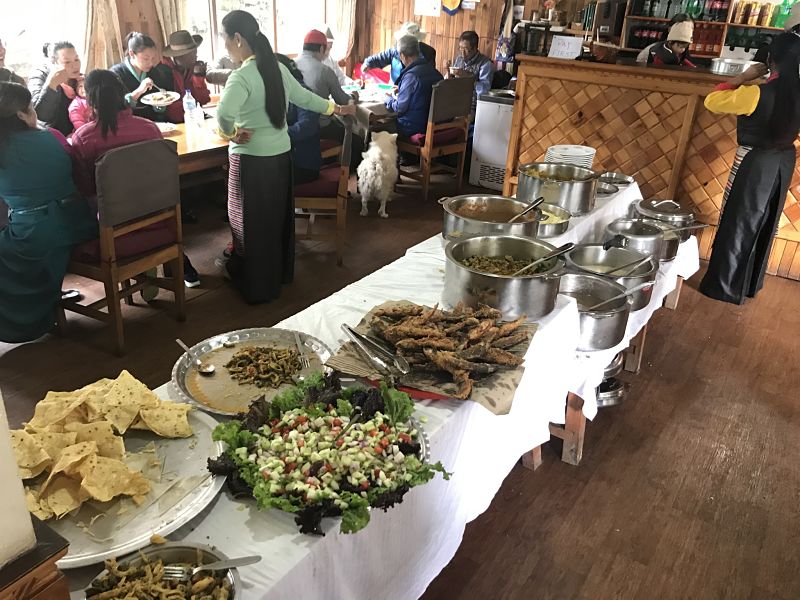
Community lunch is ready 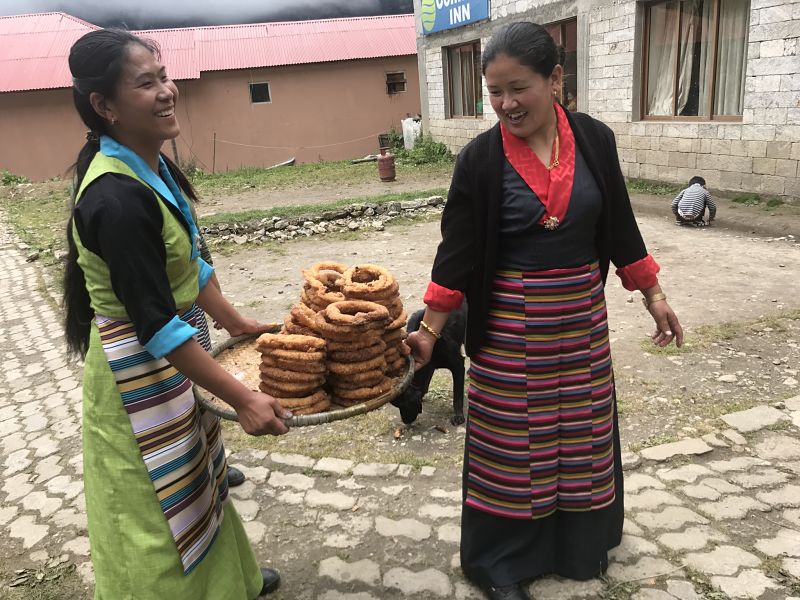
Special kind of bagels for appetizer
Namche’s party lasts 3 days, but in this case everyone goes to sleep at home. It’s a party to have fun. They are 3 days during which they have breakfast, lunch and dinner in the premises where the party is held, sing and dance and, above all, play. They spend the 3 days playing cards. In every room where the party is held, there are tables, with stacks of money, with groups of men or women playing cards. This is because it is the only occasion of the year when it is allowed to play with money, in public places. And they really take benefit of it!
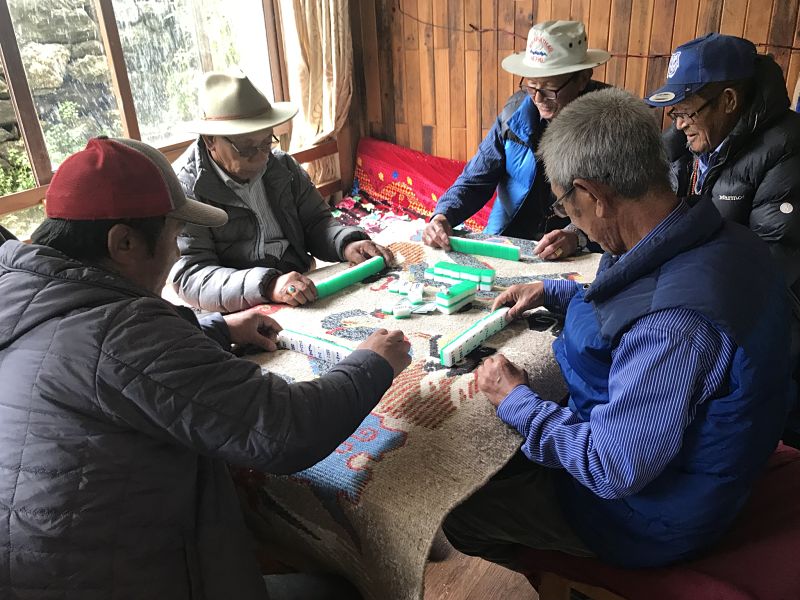
Table games 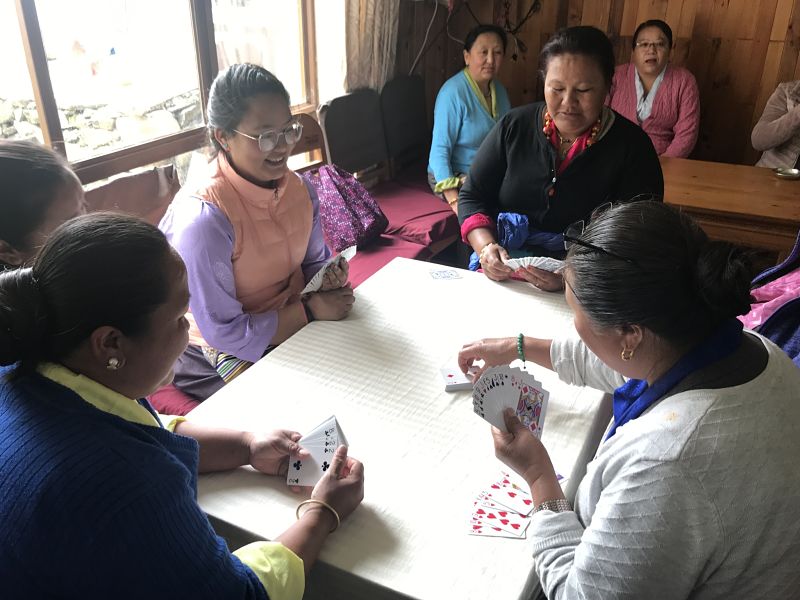
Playing cards
In the evening, it’s time to dance. Some dance with modern Nepalese music and others dance their traditional dances and sing their songs. In the case of Namche, which is where I participated, accompanied by a man with a dramnyang, a traditional 3 strings instrument.
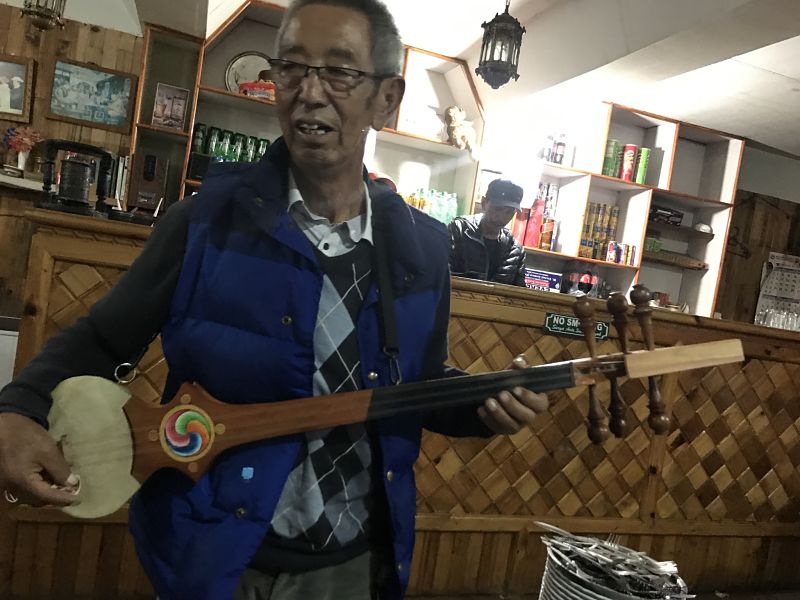
Playing a dramnyang 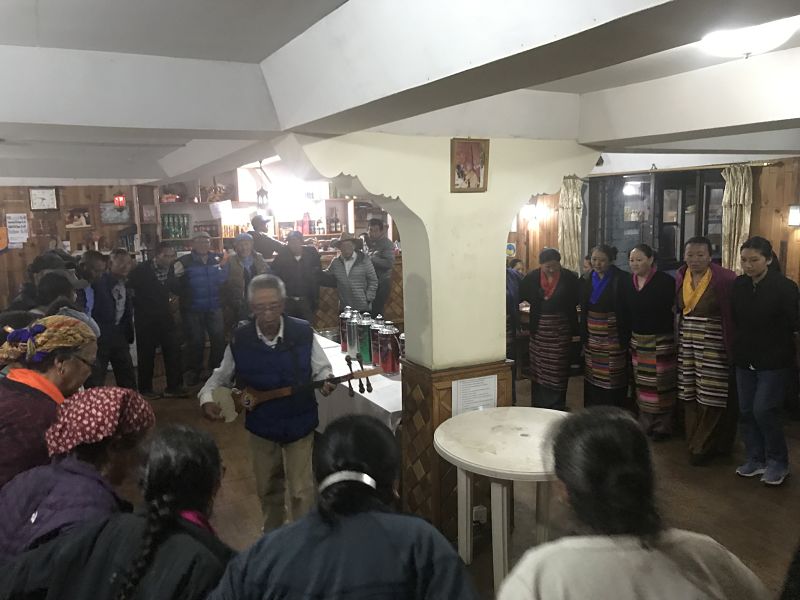
Traditional Sherpa dance
Formerly this festival was to celebrate that the toughest season of agricultural work had already ended. Nowadays they celebrate also that the spring tourist season has also ended, and people have time to rest and to make fun.
LOSAR PULU
It is a lay festival that is celebrated on the full moon of November, to celebrate the harvests of the year, although it is currently also held in places that are not agricultural, such as Namche.
During the whole day and until late at the evening, groups of men and women, who in the afternoon are joined by children when they leave school, sing traditional songs, door to door for all the houses of the village. Houses give them money, food and drink. There are houses that offer a kata (long silk scarf for wanting luck) and often their inhabitants join the group to sing and dance. The money they collect, which are many, goes to the maintenance of the monastery and the community of the village.
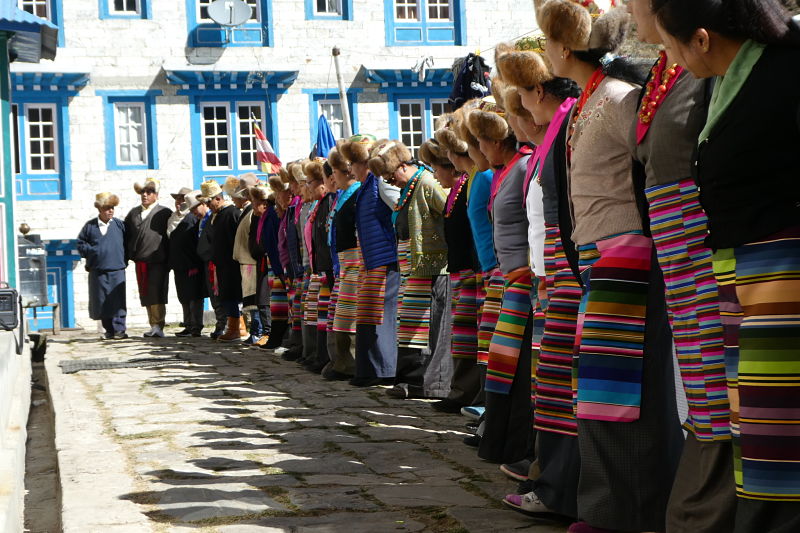
Singing and dancing door to door 
Offering refreshments
Everyone is dressed in the traditional Sherpa style that is very elegant and both men and women wear the best jewels. In Namche, the largest group this year was formed by members of the Women’s Group and the Youth Club.
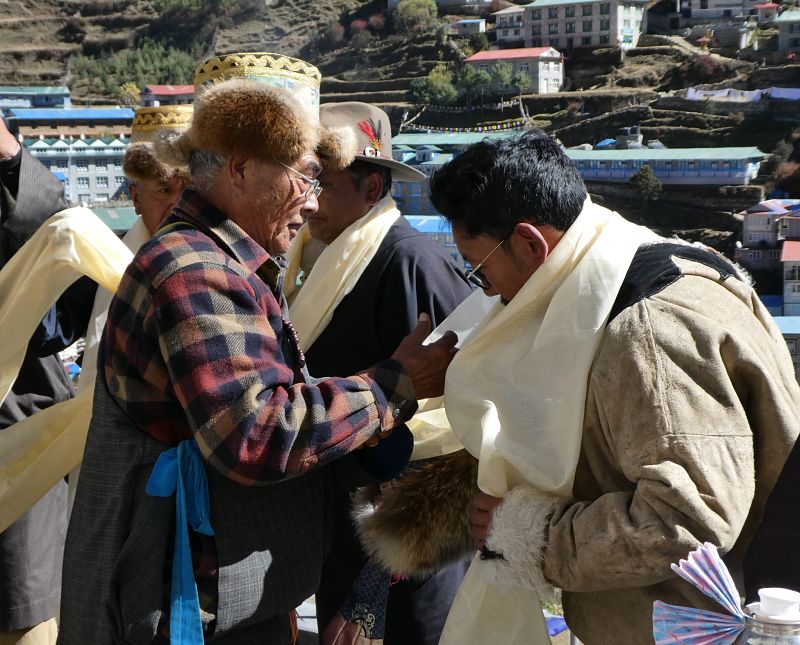
Giving Katas 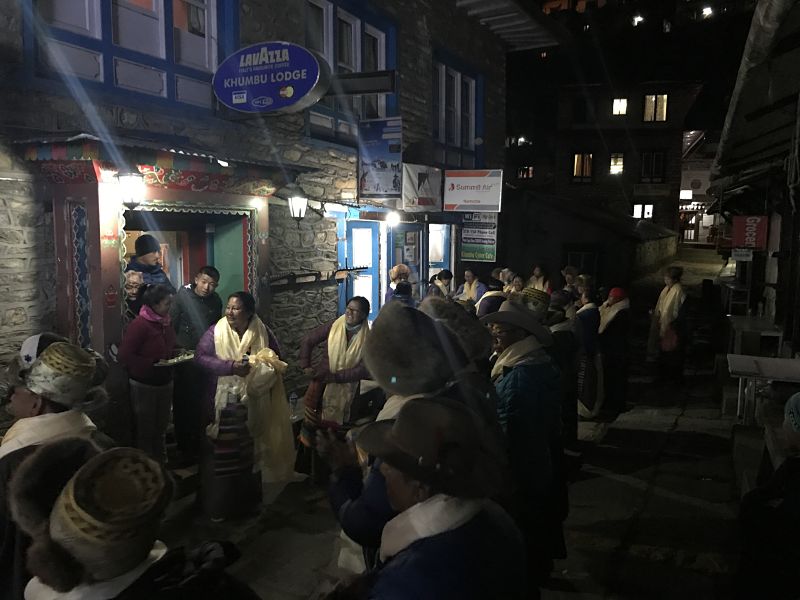
The celebration ends late in the evening
Days later, all the groups meet one the afternoon in the courtyard of the monastery and celebrate a party with traditional music, songs and dances, theatre performances and a community dinner.
CHIRIM LHABSANG
It is a religious ceremony to invoke the protector deities seeking protection of land, crops, herds and people. It is sponsored by the community of each village, which every year designates two organizers (lawa) who organise and sponsor the ceremony. It is usually celebrated at the end of spring, but in Thame they do it at the end of November.
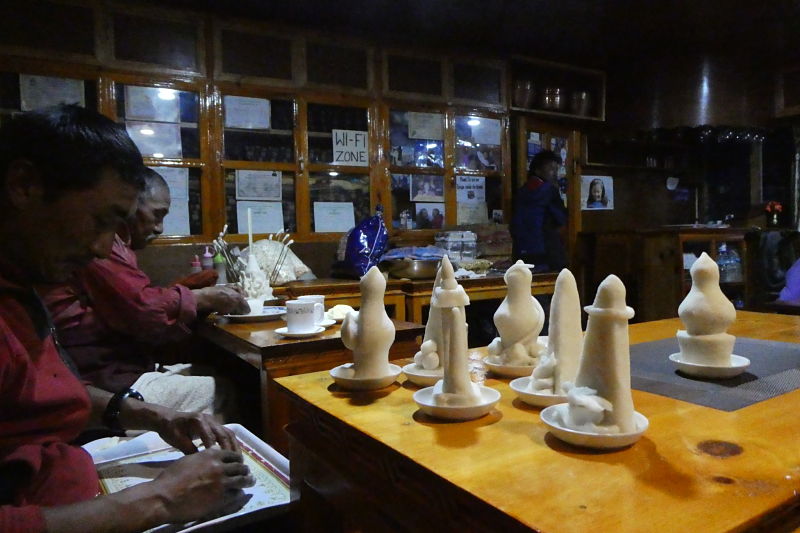
Preparing tormas 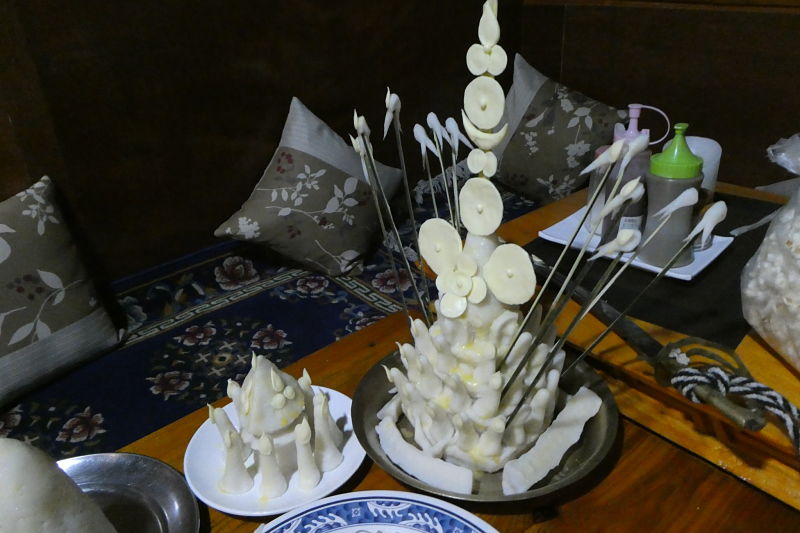
True watermarks
In those days I was staying at this year’s organizer’s house and I had the opportunity, and luckily, to see how the day before two monks from the monastery of Thame prepared the torma, which are figures of various forms, very worked, modelled with a dough made with boiled rice.
The next morning, torma and all the other elements necessary for the ceremony are moved to the place that the village already have for these occasions. In Thame it is a small construction, which they call a shrine, located on top of an immense boulder that is in the middle of a field, where people stay during the celebration.
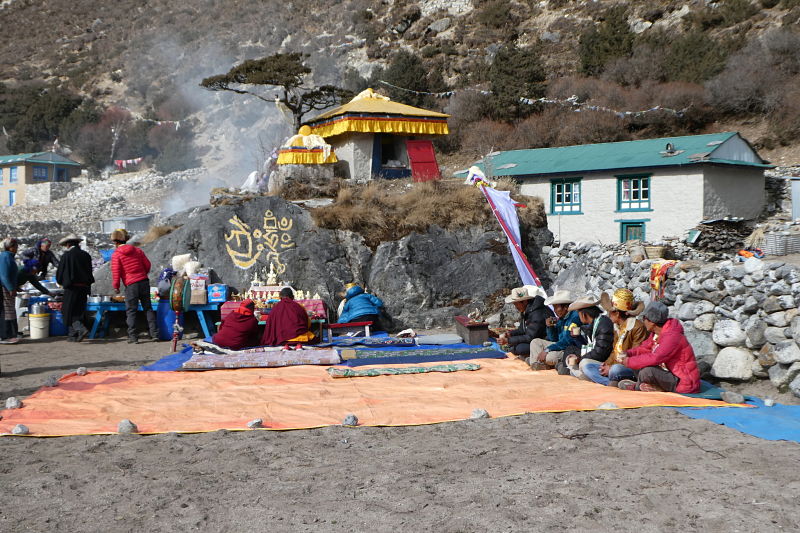
Ceremony place 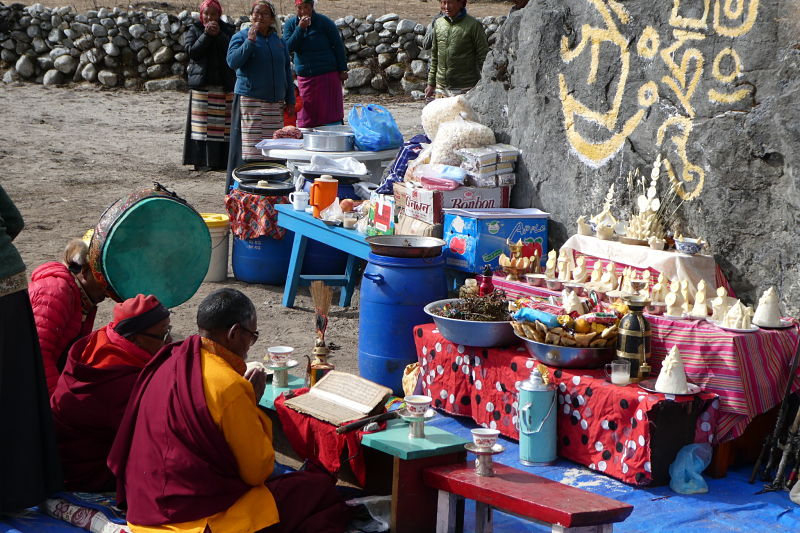
Lamas recite mantras
The ceremony lasts about three hours, during which two or three monks recite mantras and play horns and drums. Meanwhile, the people who attend it, which are almost all the families of the village, speak among themselves and drink tea or chang, which is the alcoholic beverage they make from rice. Once the ceremony is over, they have a small party in the same place, with dances and songs, and then they go back home.
Some villagers told me that, after this ceremony, they return home more confident and optimistic about their future.